Top 10 Most Incredible Huge Machines Ever Built
Discover the giants of engineering with our list of the top 10 most incredible huge machines ever constructed.

Huge machines have always captured our imagination. From the pyramids of Egypt to modern engineering marvels, humanity's quest to build bigger and more incredible structures seems endless. This fascination not only showcases our engineering prowess but also our endless desire to push the boundaries of what's possible. In this article, we dive into the world of giants, featuring the top 10 most incredible huge machines ever constructed. These machines are not just big; they represent the pinnacle of human ingenuity and the relentless pursuit of advancement.
Exploring the World of Huge Machines
In the realm of engineering, size does matter. The immense scale of some projects requires equally magnificent machines, capable of tasks that astonish the average onlooker. From gigantic excavators mining coal to colossal particle accelerators unlocking the mysteries of the universe, these huge machines are a testament to what we can achieve. Each machine on our list has been selected not just for its size, but for its impact on industry and science. They remind us that in the face of seemingly insurmountable challenges, human creativity and determination can prevail.
List of Top Choices
- Bagger 288: The world's largest land vehicle
- Large Hadron Collider (LHC): A particle accelerator
- Chinese Sky Eye: The largest single-dish radio telescope
- Zhenhua 30: A giant floating dock
- Bagger 293: A massive bucket-wheel excavator
- Offshore Wind Turbine: A giant in renewable energy
- Giant TBM: A tunnel boring machine that breaks all records
- Starship: SpaceX's reusable spacecraft
- Super Motorcycle: A motorcycle with astonishing speed
- LSST Digital Camera: Mapping the universe
Bagger 288: The world's largest land vehicle

- Operational since 1978, built by Krupp for the energy and mining firm Rheinbraun.
- Stands over 95 meters tall and 220 meters long - about the height of the Statue of Liberty.
- Can excavate up to 240,000 tons of coal or earth per day – equivalent to a small mountain.
The Bagger 288 represents an apex in the world of heavy machinery. Built to remove overburden prior to coal mining in the Hambach stripmine in Germany, this bucket-wheel excavator is a titan of engineering. Its sheer size allows it to move massive amounts of material, making it an irreplaceable asset in the mining industry. Beyond its scale, the Bagger 288's mobility sets it apart; despite its weight of 13,500 tons, it can move across the mine at 2 to 10 meters per minute. This marriage of size and movement capability makes the Bagger 288 a standout example of human ingenuity in the realm of huge machines.
Large Hadron Collider (LHC): A particle accelerator

- Located at CERN, on the border of France and Switzerland, it's the largest machine of its kind.
- Rings span 27 kilometers and lie 175 meters beneath the Earth's surface.
- Enables physicists to study the smallest known particles – the fundamental building blocks of all things.
The Large Hadron Collider (LHC) is not just a machine; it's a marvel of modern science and engineering. Built to help scientists explore the unanswered questions of physics, the LHC accelerates protons to near the speed of light. The results from these high-energy collisions have pushed the boundaries of human knowledge, including the discovery of the Higgs boson particle in 2012. What sets the LHC apart is not only its size but its capability to recreate conditions that existed a fraction of a second after the Big Bang, offering insights into the origin and fabric of the universe.
Chinese Sky Eye: The largest single-dish radio telescope
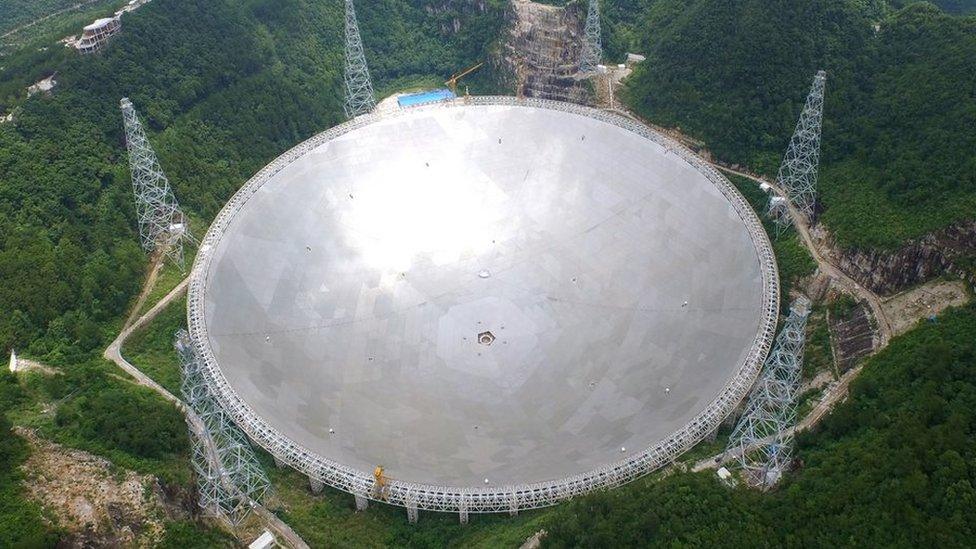
- Officially known as the Five-hundred-meter Aperture Spherical Telescope (FAST).
- Located in a natural basin in Guizhou, China, its construction was completed in 2016.
- Has a collecting area of 196,000 square meters, capable of gathering signals from billions of light years away.
Breaking records and expanding our view of the universe, the Chinese Sky Eye stands as the largest and most sensitive radio telescope ever constructed. Its vast dish allows astronomers to detect radio waves from distant galaxies, pulsars, and potentially signs of extraterrestrial life. The telescope's unique construction, involving a dish nestled within a natural karst depression, exemplifies incredible engineering to minimize environmental impact while maximizing scientific potential. The Chinese Sky Eye marks a significant leap forward in our ability to observe the cosmos, offering new opportunities to understand the mysteries of the universe.
Zhenhua 30: A giant floating dock

- One of the largest floating cranes in operation, used primarily for offshore construction.
- Capable of lifting 12,000 tons, equivalent to lifting over 1,500 adult elephants.
- Plays a crucial role in the construction and repair of ships, oil platforms, and large-scale maritime projects.
The Zhenhua 30 is a titan among floating docks and cranes, reflecting the vast scale and capability required in today's offshore construction and maritime projects. Its lifting capacity is unparalleled, allowing for the safe and efficient transport of massive structures that are critical to various industries. This floating giant is not just a testament to human engineering but also a key asset in the global supply chain, facilitating the building and maintenance of structures that are too large for any land-based crane to handle. The Zhenhua 30 epitomizes the blend of size, strength, and precision that defines the most incredible huge machines in operation today.
Bagger 293: A massive bucket-wheel excavator
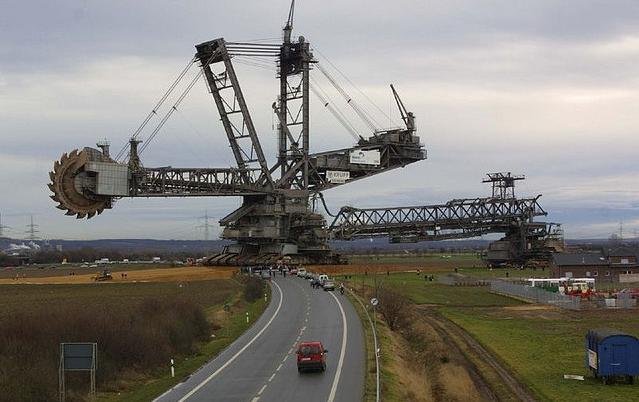
- Another creation by ThyssenKrupp, launched in 1995 to surpass its predecessor in efficiency.
- Stands 96 meters tall and 225 meters long, making it one of the tallest man-made machines.
- Designed for coal mining, capable of excavating 240,000 tons of material per day.
Close on the heels of the Bagger 288, the Bagger 293 was crafted to push the limits of what bucket-wheel excavators could achieve. As one of the largest moving land vehicles ever built, it mirrors its precursor’s capabilities but with updated technology and efficiency. Operating in the Hambach stripmine in Germany, this beast of a machine continues to be a linchpin in the mining industry, showcasing the extraordinary lengths to which human engineering and ingenuity can go. The Bagger 293 not only exemplifies the colossal size of today's industrial machinery but also the continuous human quest for technological advancement.
Offshore Wind Turbine: A giant in renewable energy
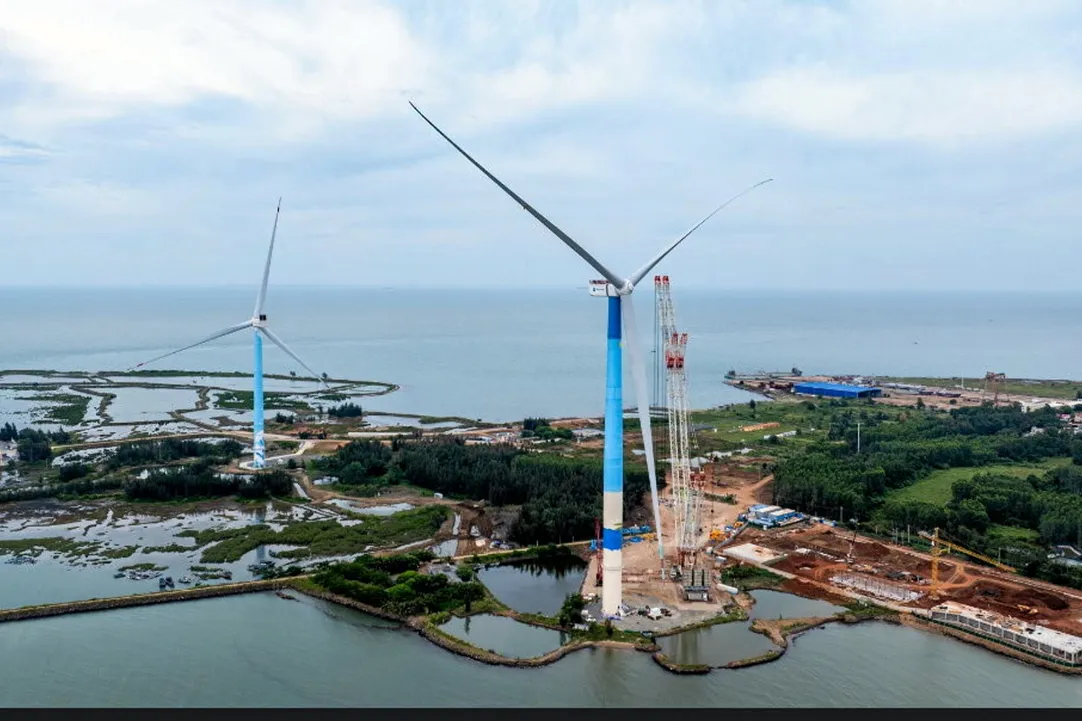
- Some of the largest turbines have a rotor diameter reaching up to 260 meters, larger than two football fields end to end.
- Capable of generating up to 12 MW of power, enough to supply electricity to around 16,000 households.
- Contributes significantly to reducing carbon footprint and advancing towards sustainable energy goals.
Offshore wind turbines are monumental structures that tower above the sea, signifying humanity's shift towards renewable energy sources. These giants are not just known for their impressive size but also for their capacity to generate substantial amounts of clean energy. The evolution of wind turbine technology has allowed for greater efficiency and higher power output, making them a cornerstone in the quest for green energy. As these turbines stand in offshore locations, they harness the power of the wind more consistently than their onshore counterparts, pushing the boundaries of what is possible in renewable energy generation.
Giant TBM: A tunnel boring machine that breaks all records
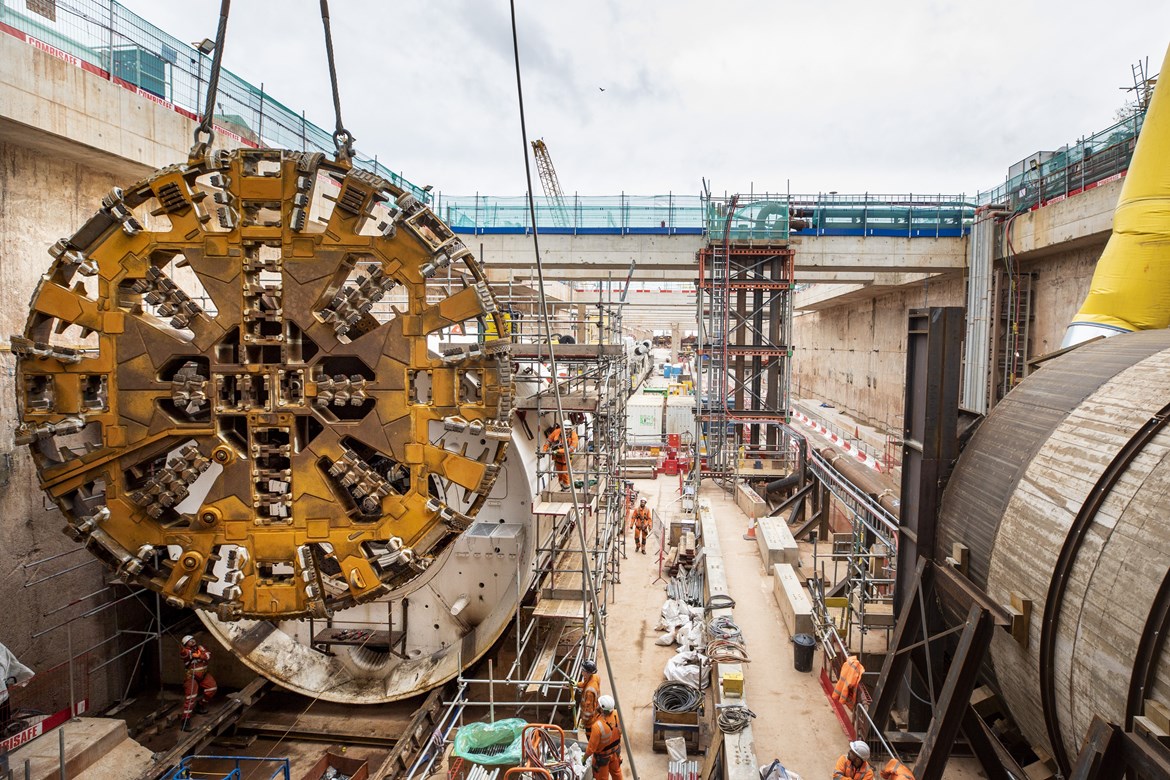
- Some TBMs are over 10 meters in diameter, large enough to drive a train through.
- Can tunnel through mountains, under cities, and beneath the seabed, facilitating major infrastructure projects.
- Minimizes environmental impact compared to traditional open-cut methods.
The Giant Tunnel Boring Machine (TBM) redefines the concept of digging. These subterranean behemoths are engineering marvels, capable of excavating tunnels for metros, sewer systems, and water transports. Unlike other massive machines that are celebrated for their sheer size above ground, TBMs achieve their fame from the vast networks they create beneath our feet. The ability to drill through various geological formations with minimal surface disruption is what sets these machines apart. They not only represent a feat of engineering but also embody the progress in how humans approach complex construction challenges with an eye towards environmental conservation.
Starship: SpaceX's reusable spacecraft

- Developed by SpaceX with the ambitious goal of carrying humans to Mars.
- Features a fully reusable design, aiming to drastically lower the cost of space travel.
- Capable of carrying up to 100 passengers, it’s a cornerstone for the future of interplanetary exploration.
SpaceX's Starship stands out as a herald of a new era in space exploration. Its innovative design and aspirations transcend the boundaries of Earth, aiming to make human life multiplanetary. Unlike any spacecraft before it, Starship is designed for full reusability, enabling more frequent launches at a reduced cost. This towering machine is not just a spacecraft; it's a vision of the future. It symbolizes humanity's relentless pursuit to explore beyond our known boundaries, making the dream of Mars colonization seem increasingly within our reach.
Super Motorcycle: A motorcycle with astonishing speed

- Equipped with a 2.3-liter engine, one of the largest found on any motorcycle.
- Can reach speeds of over 200 mph, making it one of the fastest bikes on the market.
- Blends advanced engineering with the thrill of high-speed travel.
The Super Motorcycle represents the pinnacle of speed and engineering on two wheels. Its massive engine and sleek design push the limits of what motorcycles can achieve, offering a blend of power and performance that is unrivaled. This machine is not just about speed; it's a testament to the advancements in automotive technology, providing an unparalleled riding experience. Riders who mount this beast are not simply looking for a way to get from point A to B; they are partaking in an experience that defies the norm, challenging the very limits of speed and engineering.
LSST Digital Camera: Mapping the universe
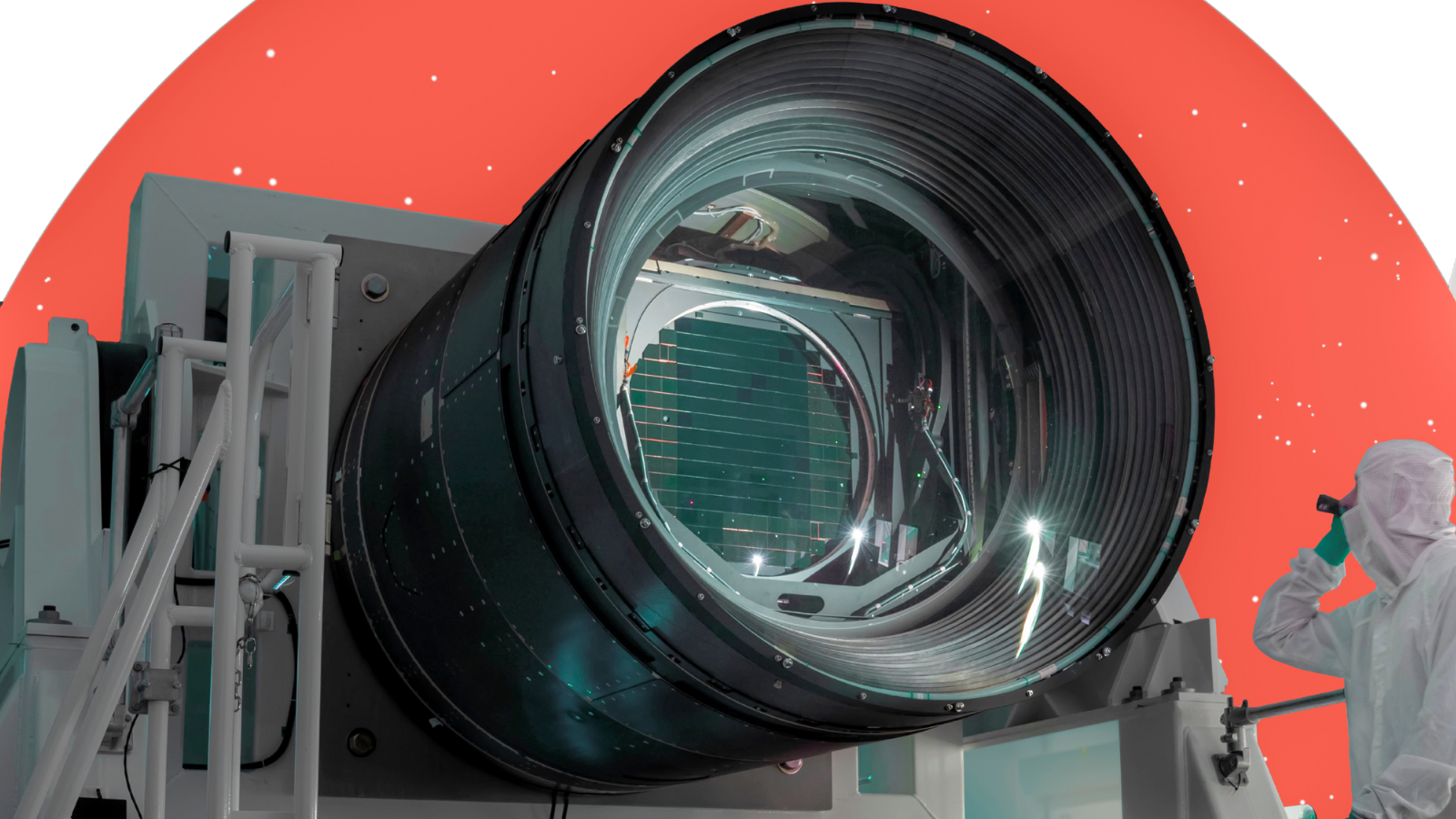
- The world's largest digital camera, specifically designed for astronomy.
- Capable of capturing images of the night sky with an extraordinary level of detail.
- Will play a crucial role in the upcoming Legacy Survey of Space and Time project.
The LSST Digital Camera is an awe-inspiring piece of technology that brings the cosmos closer to Earth. Engineered for the Vera C. Rubin Observatory, this camera is set to revolutionize our understanding of the universe. With its unmatched ability to capture the night sky in unparalleled detail, astronomers will be able to explore the mysteries of dark matter, dark energy, and celestial phenomena with new depth. This instrument exemplifies how huge machines not only push the limits of physical size but also expand the horizons of human knowledge. Through its lens, we will embark on a monumental survey that promises to map the cosmos like never before, highlighting the significant role these giant machines play in unlocking the secrets of the universe.
What's Your Reaction?











































































